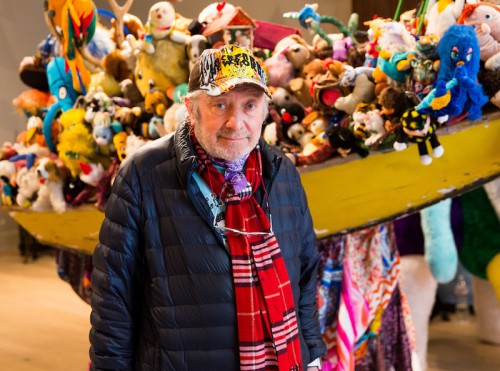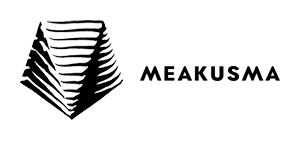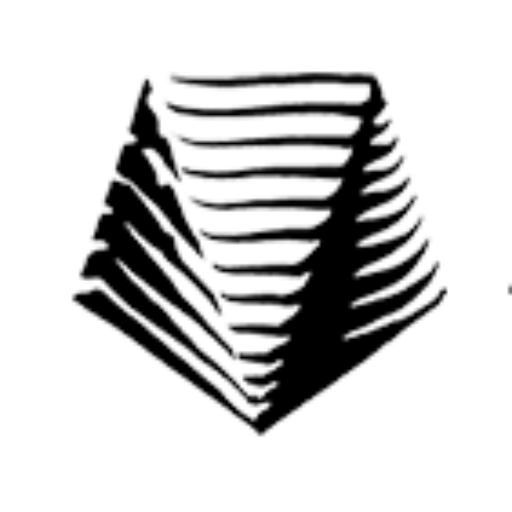
[sharify]
Charlemagne Palestine
(SUB ROSA, ALGA MARGHEN – USA/BE)
Charlemagne Palestine was born Chaim Moshe Palestine in Brooklyn, New York of a Jewish immigrant family from Odessa and Minsk in 1947. He began at six years old to sing traditional Jewish cantorial music in the synagogue.
In the 50s, he accompanied on exotic hand drums poets and musicians like Allen Ginsberg, Peter Orlovsky, Gregory Corso and Tiny Tim. He then became the Carillonneur of St Thomas Church next to the Museum of Modern Art where he began to invent a radical unique approach of bell sonorities which could be heard each afternoon on the street and in the sculpture garden of the museum from 1963 to 1969. At the New York University, he began composing electronic musics at the NYU Electronic Music Studio run by Morton Subotnick where he worked with electronic synthesiser oscillators and filters which he would name “Spectral Continuum”. Later Subotnick invited him in 1969 to relocate to Los Angeles and participate in the creation of a new radical school for multi-media, arts, music, dance and theatre known as the California Institute of the Arts. There he met happening artist inventor Allan Kaprow, video pioneer Nam Jun Paik, avant-garde composer James Tenney, fluxus artists Emmett Williams, Dick Higgins, Alison Knowles and Judson Dance Theatre member and artist Simone Forti with whom Palestine created a unique music and dance form called Illuminations in 1970, which they have continued to perform irregularly over the last 45+ years even just recently at Pompidou Center, Paris and MOMA, Nyc. At Cal Arts he developed many different practices: electronic and acoustical sound works, body performance art, video art and multi-media installations. With Forti he was invited for the first time to Europe to perform in a festival in Rome in 1972 where he met La Monte Young, Phil Glass, Steve Reich, Terry Riley. With his revolutionary solo piano work “Strumming”, he was included in the new musical trend known as “Minimal Music”.
In the 70s he became a celebrated and provocative Soho artist encountering and dialoguing with John Cage, Robert Rauschenberg, Claus Oldenburg, Andy Warhol, Len Lye, Merce Cunningham, Vito Acconci, Marisol, Dennis Oppenheim, Laurie Anderson, Gilbert and George, Trisha Brown, Gordon Matta-Clark…
In 1974 Karel Geirlandt and Hergé come from Brussels to visit his studio in Soho Nyc and invite him to inaugurate Geirlandt’s recent appointment as director of the Palais des Beaux-Arts in Brussels and in November of that year performs a legendary 2 1/2 hour solo installation / concert in Horta Hall on a Viennese Bösendorfer Imperial piano surrounded by his entourage of animal toy divinities that began in the early 70’s to become his trademark sacred alter-egos that later will become a new art form in themselves. He begins to use the term « CharleWorld » for his total artistic presentations.
During the seventies he invented a sound and body form of video art entitled “Body Music” running, falling, hitting and slamming into walls, floors and objects while singing or on motorcycles,The Body Musics genre of his works continued till the end of the seventies. By the early eighties, he began to do less performances and videos and devoted himself to creating large stuffed animal divinity altars inspired by his earlier sacred alter-ego travel divinities and the historical iconic “Teddy Bear” animal toy that was invented in the same neighborhood where he was born in Brooklyn in 1902 by Rose and Morris Michtom, Jewish Immigrants from the same region and background as his own grandparents. With Steiff company he built a 6 meter high GodBear/BuddhaBear outdoor sculpture in real mohair for Documenta 8 in Kassel Germany in 1987.
In the early nineties he started to be contacted by a whole new generation of musicians (Pan Sonic, Michael Gira etc…), performers and artists (Body By Body at Levy.Delval in 2014), who convince him to come back to the international scene, after some years of retreat, and with now a new audience and new presentation opportunities he begins the next chapter in his work and life and starts again to perform and create a new “Gesamtkunst”, a new “CharleWorld”



